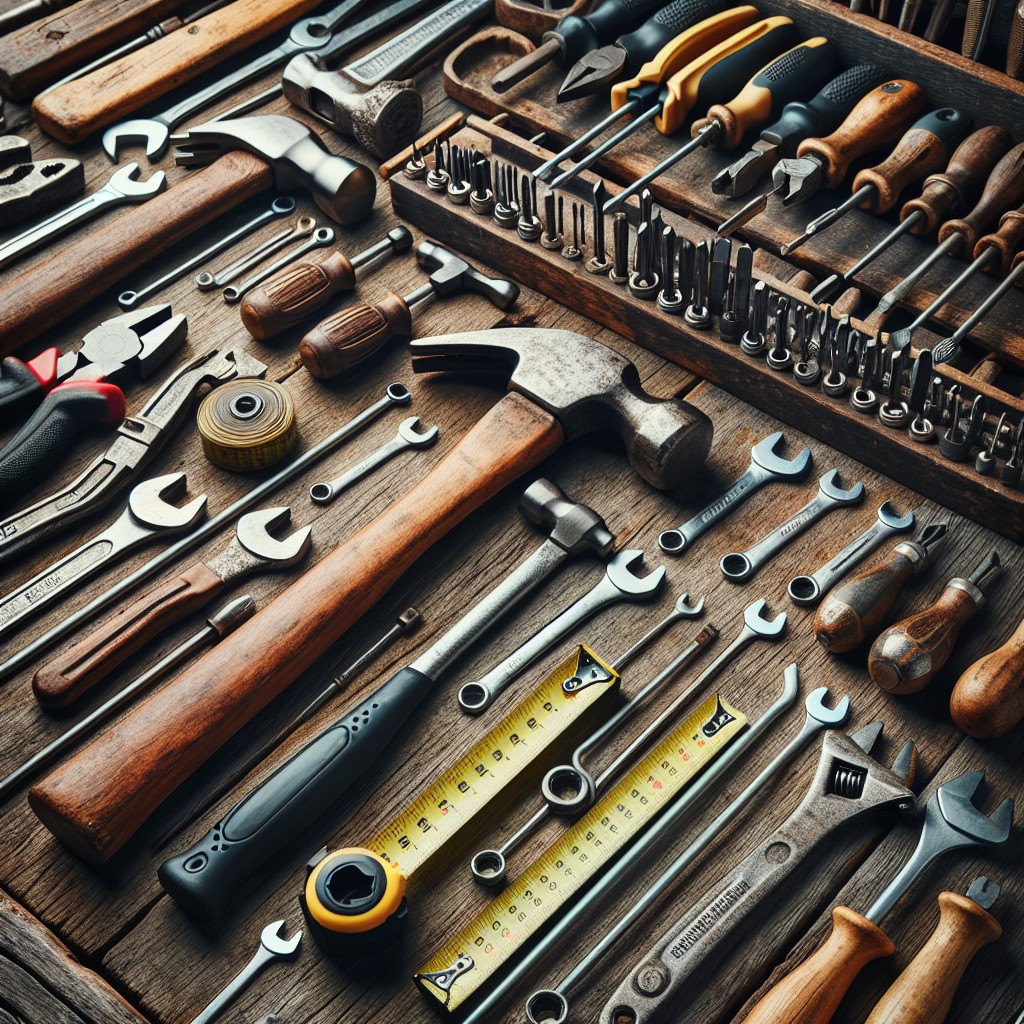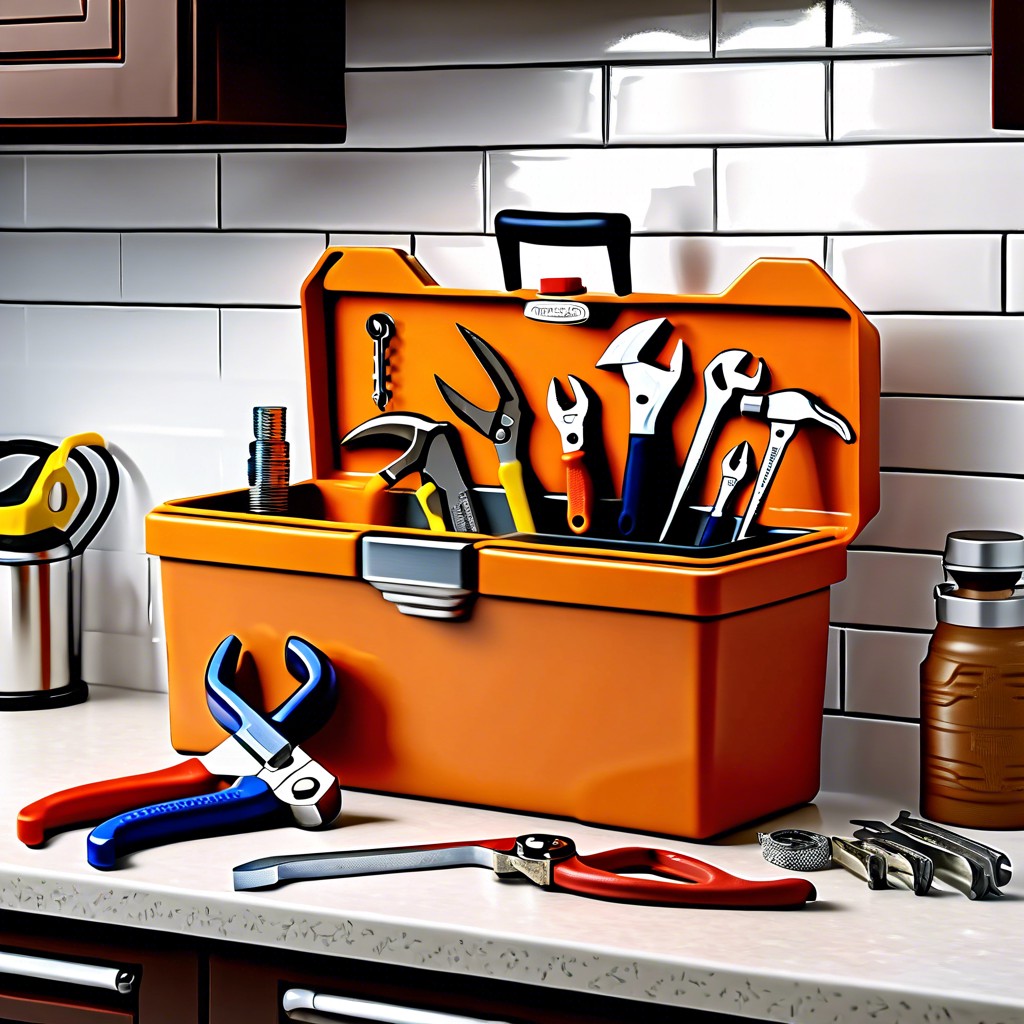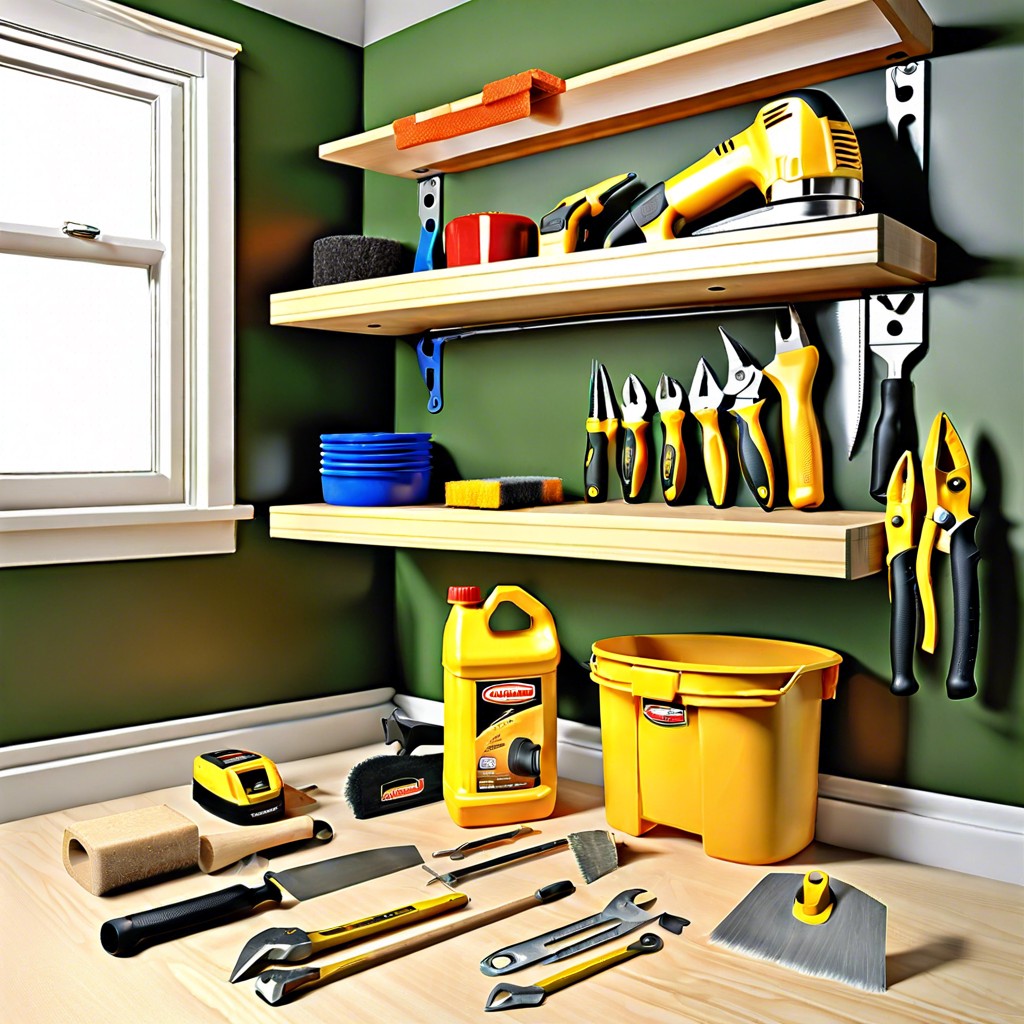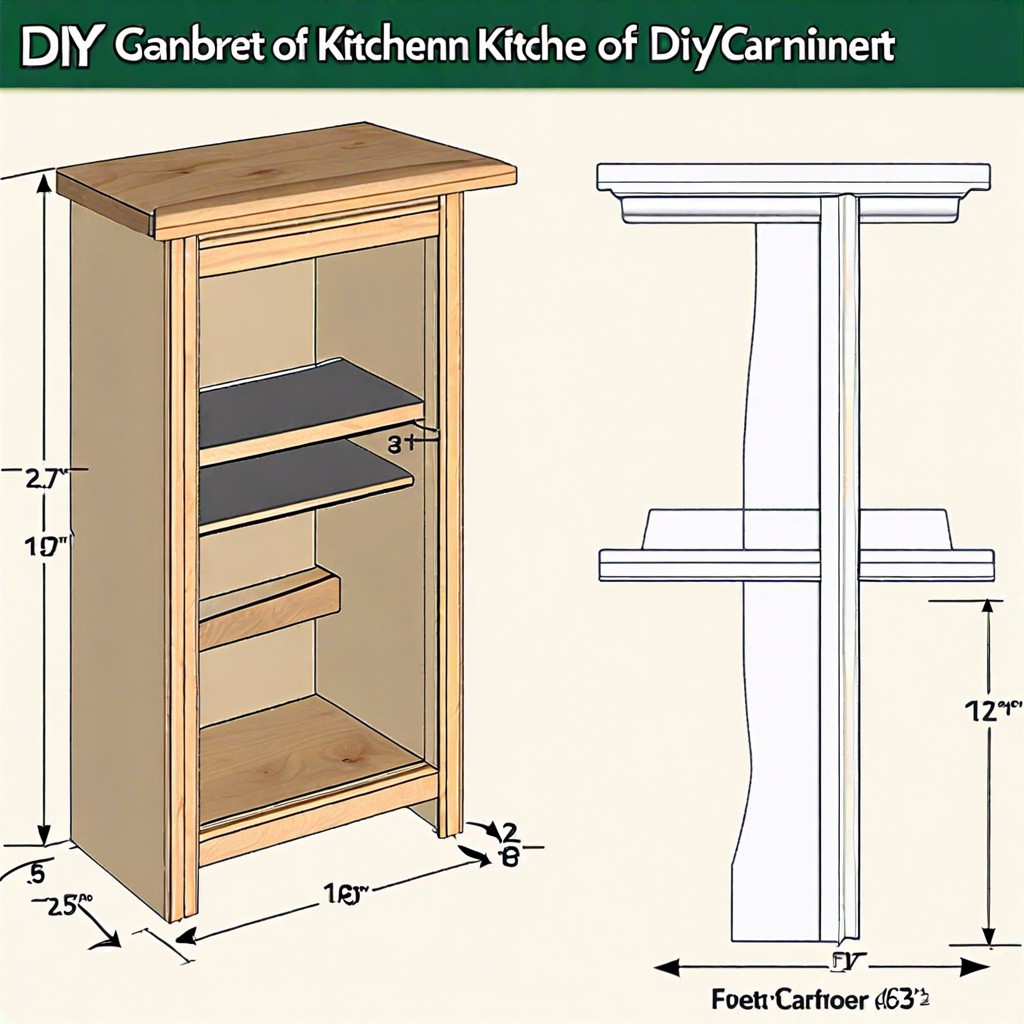Last updated on
Diving right into the realm of affordable tool brands, it becomes clear that some truly stand out from the crowd because they offer exceptional quality without breaking the bank.
Some top budget tool brands to consider:
- Bosch
- Dewalt
- Channellock
- Craftsman
- Makita
- Knipex
- Klein
- Ronix
- Milwaukee
- Metabo
Key takeaways:
- Trusted brands offer quality tools at affordable prices.
- Consider durability, ergonomics, and compatibility when choosing hand tools.
- Look for brands with a good reputation, wide product range, and warranties.
- Maintain tools properly through regular cleaning, lubrication, and inspection.
- Balancing budget and safety is important; invest in higher-quality tools.
What's Inside
Factors to Consider When Choosing Hand Tools

Selecting the right hand tools goes beyond just the price tag. Durability and longevity matter; look for tools made of high-quality materials designed to withstand regular use.
Ergonomics play a crucial role as well; tools with comfortable grips and user-friendly designs can reduce fatigue and increase productivity.
Compatibility with existing tool collections should also be considered to ensure seamless integration. A tool’s versatility can also enhance its value, allowing for multiple uses from a single purchase.
Don’t overlook the manufacturer’s reputation; trusted brands often deliver on their promises for quality and customer service.
Finally, availability of replacement parts is practical for future maintenance instead of needing full replacements, rounding out the smart purchasing decision-making process.
Brands That Offer a Balance Between Quality and Affordability

Discovering hand tool brands that strike the right balance between cost and quality can be a game-changer for both DIY enthusiasts and professionals on a budget. Here are some key points to guide you in your search:
- Reputation for Durability: Brands that consistently receive positive reviews for the longevity of their tools can be trusted to offer value over time, despite their lower prices.
- Wide Product Range: Look for brands with a broad selection of tools, ensuring you have access to the right item for every job without breaking the bank.
- Warranty Offers: Quality budget brands often back their products with a solid warranty, signifying confidence in their tool’s performance and offering peace of mind.
- Customer Support: Even at a lower price point, responsive customer service is a sign of a good tool brand, helping you deal with any issues that may arise.
- Innovation: Brands that invest in research and development tend to create tools that outperform their price tags, offering the latest features and ergonomic designs for less.
By keeping these points in mind, you can find reliable brands that provide well-made tools for your projects while respecting your budget constraints.
Tools That Provide Great Value for Their Cost
When exploring tools that hit the sweet spot between cost-effectiveness and functionality, several points illuminate their value. First, durability is crucial; seek options crafted from high-strength materials meant to withstand rigorous use. Next, multi-functionality is a boon, with tools offering multiple uses or adaptability saving both money and space. Ergonomic design also features prominently, as tools that reduce strain during prolonged use enhance efficiency and comfort.
User reviews and ratings are insightful resources, shedding light on real-world performance beyond marketing claims. A brand’s reputation for customer service can further tip the scales, as responsive support and quick resolution of issues amplify the value of your purchase. Lastly, compatibility with existing tools or systems ensures seamless integration, avoiding the need for additional investments.
By weighing these aspects, you can discern which tools offer the most bang for your buck, without compromising on quality or performance.
Tips On Finding Quality Tools On a Tight Budget
Leverage seasonal sales and promotions to snap up high-grade tools at a fraction of the cost. Retailers often discount stock around holidays or the change of seasons, so plan purchases accordingly.
Buying refurbished or slightly used tools from reputable sources can offer significant savings. Check for manufacturers that sell certified refurbished tools with a warranty.
Consider tool sets for basic needs as they typically offer better value than purchasing each piece individually. Ensure sets include the items you need without excess that will go unused.
Join online forums or local DIY groups to gain insights on deals and quality pre-owned tools. Members often share exclusive discounts or sell tools they no longer need.
Subscribe to newsletters from trusted hardware stores to get first dibs on clearance items or exclusive subscriber discounts.
Research brands that have proprietary technologies or features within your budget, as some may have patented elements that enhance durability without increased cost.
Look for combo deals where you can get a discount for buying a tool with accessories or complimentary items, as these can be more cost-effective than separate purchases.
Understanding the Warranty and Return Policy
Examining a brand’s warranty and return policy is a crucial step in selecting budget-friendly tools. A solid warranty often indicates a company’s confidence in its product. Look for at least a one-year warranty, which should cover any manufacturing flaws or premature wear. Some exceptional brands even offer lifetime guarantees, which can be a massive bonus for budget tools.
When reviewing return policies, clarity and length of the return window are key. You’ll want the option to return or exchange a tool that doesn’t meet expectations. A 30-day return policy is standard, but more generous policies may offer up to 90 days.
Check the details for any restocking fees or conditions that might affect your ability to return an item. For online purchases, verify who covers return shipping—it’s a small detail that can add up if you’re not careful. Remember, a clear and favorable warranty and return policy not only protects your investment but also provides peace of mind when shopping on a budget.
The Importance of Proper Maintenance to Extend Tool Life
Proper maintenance goes a long way in preserving the function and extending the lifespan of your budget tools. Engaging in a basic care routine can prevent rust, wear, and tear, and keep your tools performing at their best.
- Regular Cleaning: Remove dirt, grime, and any debris after every use. Wiping your tools down prevents buildup that can corrode or damage moving parts.
- Correct Storage: Store your tools in a dry, clean place. Use toolboxes or wall-mounted racks to protect them from moisture and extreme temperatures, which can harm their mechanisms and materials.
- Lubrication: Apply appropriate lubricants to moving components to ensure smooth operation and to protect against rust.
- Sharpening: Keep cutting tools like saws and blades sharp to maintain efficiency and ease of use. Dull tools require more force, increasing the risk of breakage or injury.
- Inspection: Routinely check for signs of wear or damage, such as cracks in handles or loose parts. Early detection can allow for repair before further damage occurs.
- Tighten Fasteners: Periodically check and tighten nuts, bolts, and screws as they can come loose over time with regular use.
Incorporating these points into your tool care routine will help sustain your investment and ensure that your tools are ready for action whenever you are.
Safety and Quality
Balancing budget considerations with the necessity of acquiring tools that won’t compromise your safety is crucial. Durable materials and solid construction not only extend the life of a tool but also ensure that it can be used safely, without unexpected breakage that could lead to injury.
It’s essential to evaluate the tool’s ergonomic design which can prevent overexertion and repetitive strain injuries. Look for tools that have anti-slip grips and designs that conform to the natural movement of your hand and body.
Be aware that lower-quality tools may not meet industry standards and certifications. These standards are benchmarks for safety; tools that adhere to them minimize risks associated with tool failure.
Remember, a budget tool doesn’t have to mean budget safety; prioritize finding brands that have a clear commitment to both to ensure you’re making a safe investment in your toolkit.
How Investing in Higher Quality Tools Can Also Mean Investing in Safety
Investing in higher-quality tools isn’t just about durability; it’s a direct investment in your personal safety. Quality tools are engineered with better materials designed to withstand pressure and wear, reducing the risk of breaking or failing during use. A broken tool can lead to accidents and injuries, so it’s essential to prioritize tools that are reliable and built to last.
Moreover, reputable brands often incorporate ergonomic designs that can minimize the strain on your body. This is crucial for those who use tools regularly, as it can prevent long-term health issues like carpal tunnel syndrome or repetitive strain injury.
Additionally, high-quality tools come with features that enhance safe use. Non-slip grips, insulated handles for electrical work, and guards on cutting tools are common safety features that may not be present in lower-end options. These integrated safety elements not only protect you but can also make the job at hand more efficient.
While budget tools might seem like a bargain initially, consider the potential costs of injury and tool replacement in the long run. Emphasizing safety and quality is not just about getting the job done, it’s about doing it responsibly without compromising your well-being.
The Risks Associated With Low-Quality Tools
Opting for cheaper tools can be a tempting path when shopping on a budget, but this decision comes with hidden dangers. Compromised materials used in low-quality tools may lead to premature wear and breakage. This not only results in the need for frequent replacements but can also pose a serious safety hazard.
Imagine a wrench snapping while exerting full force, or a drill bit shattering mid-use – these scenarios could cause injury to the user or others nearby. Additionally, low-quality tools often lack precision, leading to poor outcomes in your projects. Tasks that require exact measurements and clean cuts might suffer, impacting the final product.
It’s essential to weigh the initial savings against the potential for long-term costs and safety issues when considering budget tool brands.
FAQ
Are Wright tools made in USA?
Yes, Wright tools are indeed made in the USA, specifically in Barberton, Ohio, utilizing only U.S. steel.
How does the quality of Wright Tools compare to other budget tool brands?
Wright Tools generally outperforms other budget tool brands due to their solid manufacturing quality, lifetime warranty, and high-grade steel construction.
Which are the top three budget-friendly alternatives to Wright Tools?
The top three budget-friendly alternatives to Wright Tools are Pittsburgh, Craftsman, and Husky tools.
What materials are predominantly used in the manufacturing process of Wright Tools?
Wright Tools predominantly uses alloy steel in their manufacturing process.




